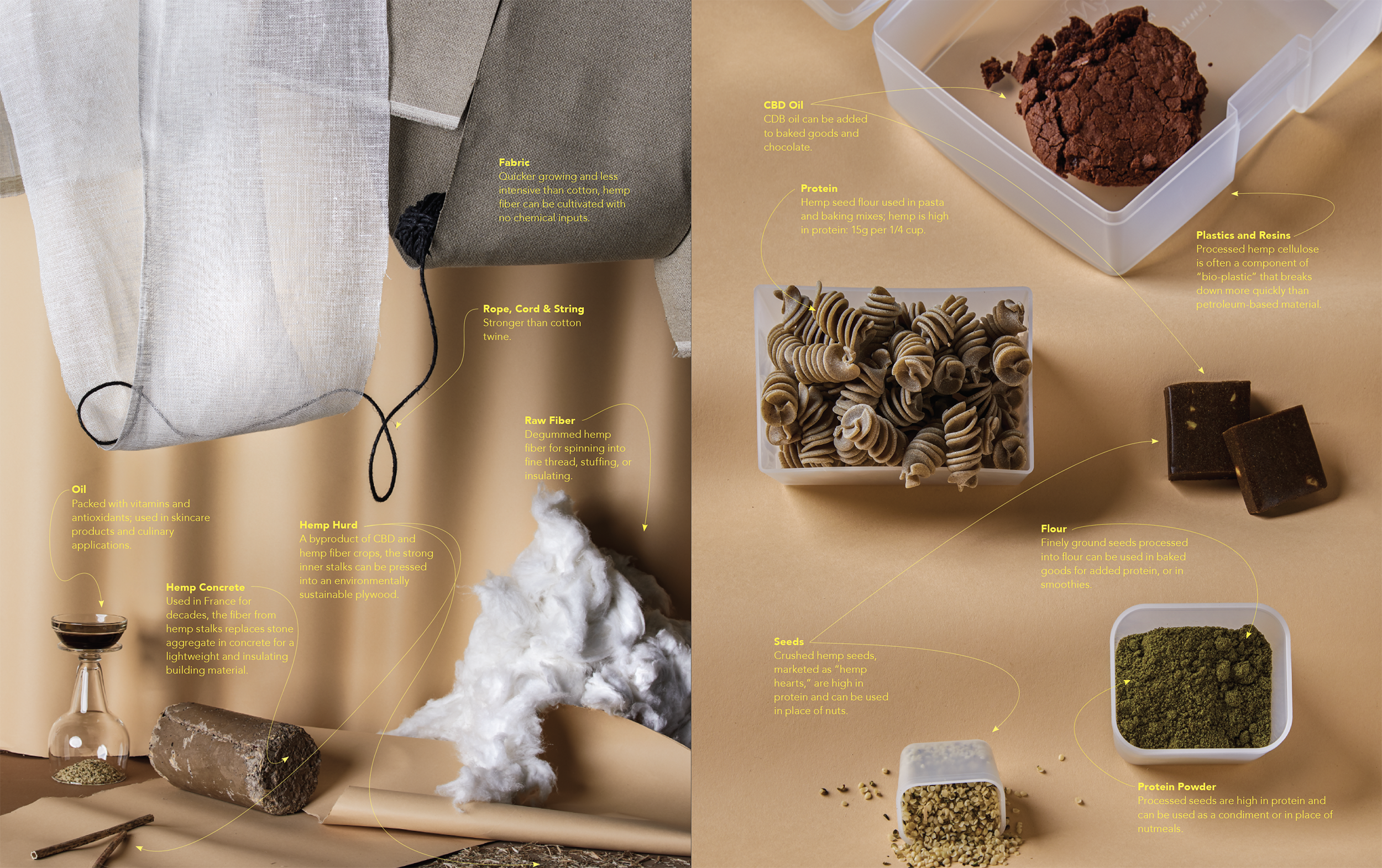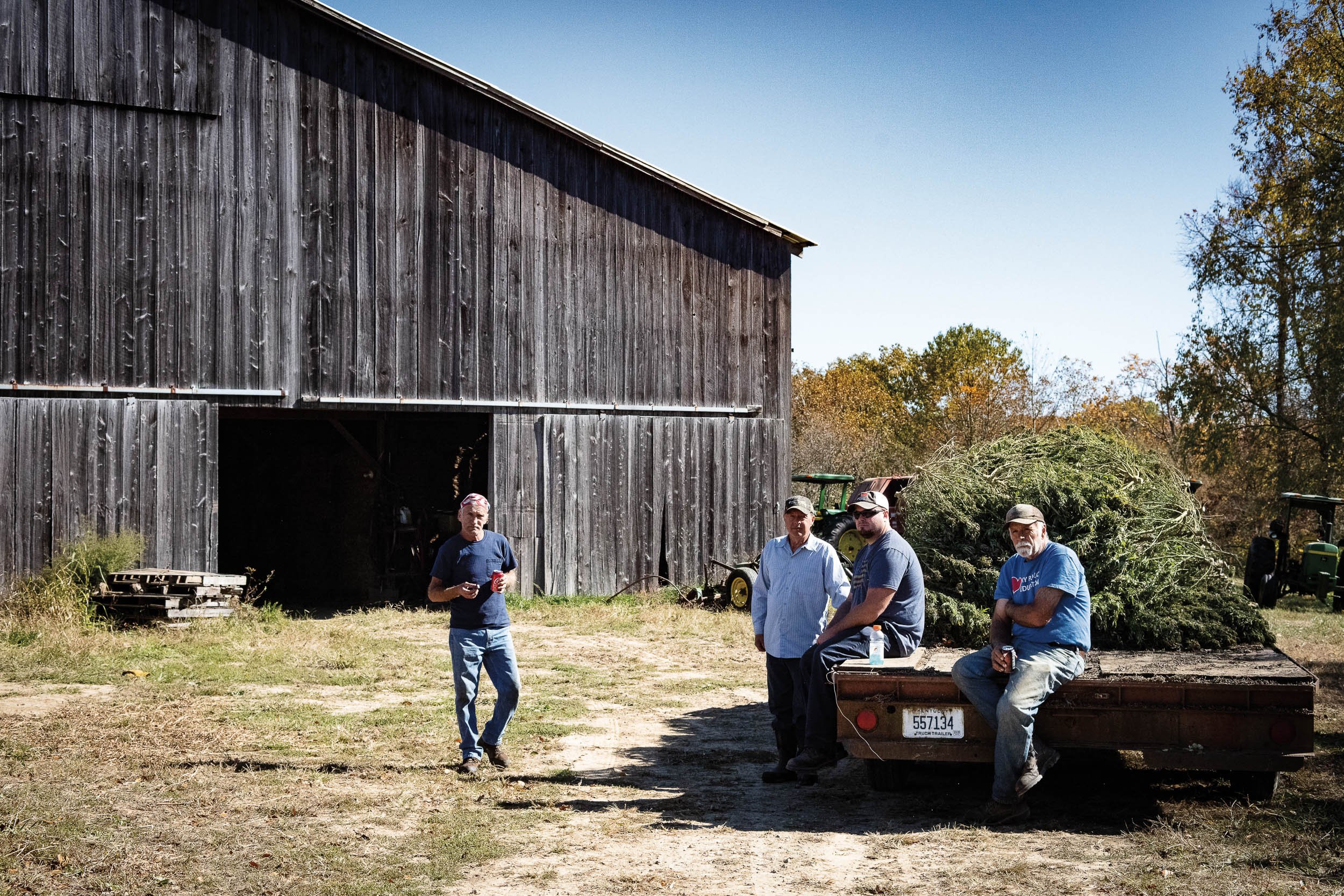Wondrous Hemp

photography by Marlene Rounds
Known for its reported 25,000 uses, several varieties of hemp exist. Varieties grown for long, strong fibers or seeds have the potential to transform large American Midwest farms by becoming a sustainable replacement for commodity crops.
Hemp Oil Packed with vitamins and antioxidants; used in skincare products and culinary applications.
Hemp Concrete Used in France for decades, the fiber from hemp stalks replaces stone aggregate in concrete for a lightweight and insulating building material.
Hemp Hurd A byproduct of CBD and hemp fiber crops, the strong inner stalks can be pressed into an environmentally sustainable plywood.
Raw Fiber Degummed hemp fiber for spinning into fine thread, stuffing, or insulating.
Rope, Cord & String Stronger than cotton twine.
Fabric Quicker growing and less intensive than cotton, hemp fiber can be cultivated with no chemical inputs.
CBD Oil CDB oil can be added to foods, baked goods, and medicinal products
Protein Hemp seed flour used in pasta and baking mixes; hemp is high in protein: 15g per 1/4 cup.
Plastics and Resins Processed hemp cellulose is often a component of “bio-plastic” that breaks down more quickly than petroleum-based material.
Flour Finely ground seeds processed into flour can be used in baked goods for added protein, or in smoothies.
Seeds Crushed hemp seeds, marketed as “hemp hearts,” are high in protein and can be used in place of nuts.
Protein Powder Processed seeds are high in protein and can be used as a condiment or in place of nutmeals.
Julie publishes Edible Ohio Valley with her family. After 15 years in the world of commercial photography, her lens is now focused on recording the sustainability movement in the Midwest. A graduate of UC’s College of Design, Architecture, Art, and Planning, she’s a partner and co-founder of The Fairview Agency, a multidisciplinary creative firm.





